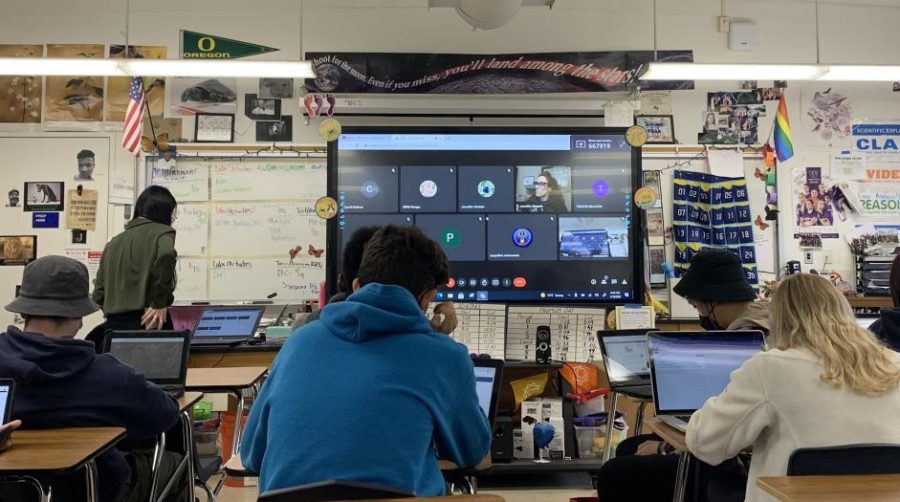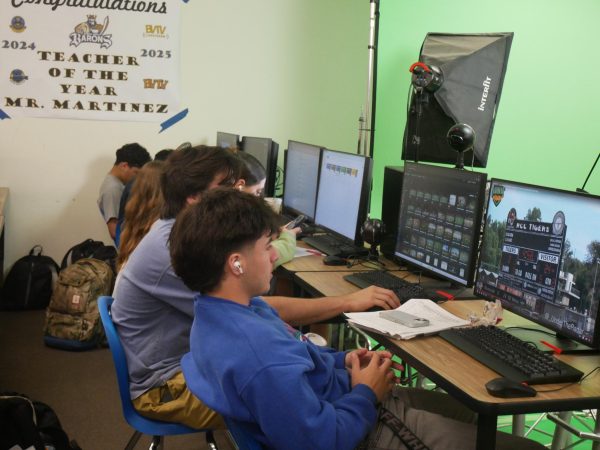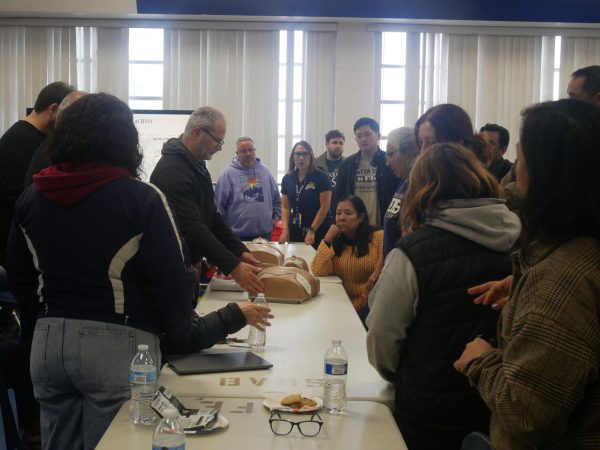A new hybrid
BVH blurs the line between in person and remote learning
Advanced Placement (AP) Environmental Science teacher Jennifer Ekstein instructs her class from home through a Google Meets call. Ekstein along with other students in her first period had do join a Google Meets in order to participate in class activities.
In Sept. 2021, California Governor Gavin Newsom signed bill AB 167 that required districts to recover attendance credit through short-term independent study agreements for students who contracted COVID-19. Returning from winter break in 2022, Sweetwater Union High School District (SUHSD) created a plan that fulfills the bill’s requirements. Students with COVID-19 related absences are required to participate in synchronous instruction.
“It cannot have come at a better time because a lot of students have been out. The response from teachers has been better this semester. They’ve been able to provide more work and more support,” Attendance Coordinator Antonio Gutierrez said.
This bill works towards two goals; allowing schools to continue to receive funding despite student absences and for students with COVID-19 to have synchronous time with their teachers.
The bill’s guidelines state that any student gone for five to 15 days for a COVID-19 related reason should alert the administration and sign a short term Independent Study Contract (ISC) provided to them by Gutierrez. If the student signs the contract, they agree to log onto a Google Meet, Zoom or Microsoft Team call that their teacher opens every day. They must also turn in at least five assignments to Gutierrez that were accomplished during their leave.
“We are asking teachers to do a minimum of 10 to 12 minutes a day [of synchronous learning, or] the whole period. During that time, they take attendance, [and] check in with the kids at home while talking to their students in the classroom,” BVH principal Roman Del Rosario, Ed.D., said.
On attendance sheets students labeled with the ‘ISN’ attendance code signifies a short term ISC.‘AZ’ is used for students with a shorter absence but for the same reasons. Teachers aren’t required to open a call for absent students unless they have students absent from school for COVID-19 isolation.
“We only could do an independent study contract, if it’s five to 15 days. So if the student is absent for one to four days, and they can’t do an independent study contract, we want them to log in,” Gutierrez said. “We want them to contact their teachers because we don’t want them to fall behind. We recognize that high school can be a stressful place in terms of academics.”
While COVID-19 related absences are excused, they are still marked as an absence on attendance sheets. Schools are provided funding from the state based on student attendance records, meaning less students at school equates to less funding.
Part of the reason why bill AB-167 was signed was to provide a way for schools to receive steady funding while half of the student population is dealing with COVID-19. The only way for a student to fix their absences is to turn in the previously mentioned five assignments they did while they were gone. This shows administrators that the student and teacher cooperated in continuing the student’s education.
Once students are home, Gutierrez is faced with the difficulty of having them sign the short term ISC. Having them complete all the requirements of said contract is another challenge. Gutierrez’s emails and attempts to contact students and parents often don’t reach them.
“It [students not completing the short term ISC] will be a hit for the school. It’s unfortunate, but I will always go back to the number one concern we have [which] is the health and well-being of the students. If it’s causing them more stress to submit this independent study work, then let’s find ways to support that student [instead of] punishing the student,” Gutierrez said.
Gutierrez estimates only a quarter of the students on a short term ISC have officially completed their contracts despite the minimal work necessary. The rest, he has had to chase down through the students parents and direct emails.
“The work to get the contract done is a fairly low bar: submit any work you can, e-mail it to me, or you can provide me with paper copies and we will handle the rest,” Gutierrez assures.
If a student ends up being out for more than the 15 days allotted there is a possibility it can be extended to 20. Gutierrez states that the student’s circumstances in that instance prompts a talk between the student’s parents, counselor and administration to find a solution.
“All in all, some people are hit harder than others–either by their health, social emotional well being, or by academics,” Gutierrez said. “We really need to take an individualized approach to try to support as many students as we can. As long as the parents and students reach out, we’ll try.”
This article was updated on Feb. 11.
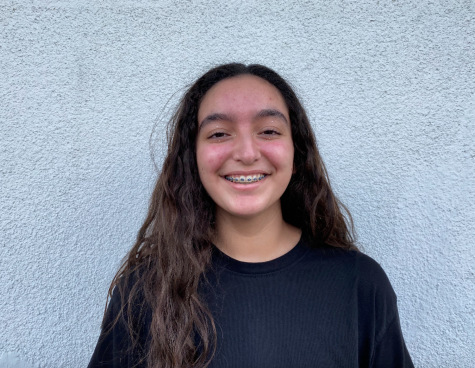
Hi readers! I’m a senior at BVH and going into my fourth and final year in the Crusader. I’ve enjoyed the past three years of being on staff and while...
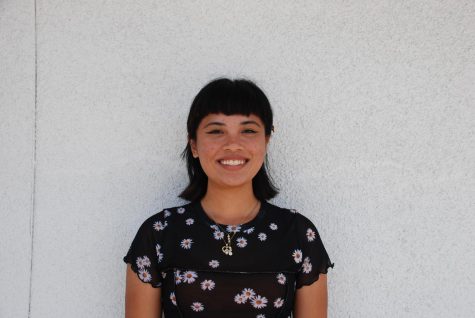
I am a senior at Bonita Vista High and this is my second year as a staff member of the Crusader. Last year, I had a blast being News Editor and I am excited...

